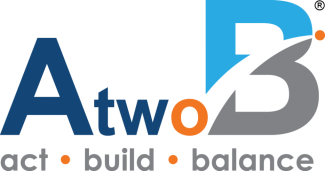F.I.T. Focus - 3 Year-End Tax Planning Opportunities for the Savvy Investor
October 2020
As an investor, continually evaluating tax planning opportunities throughout the year is an integral part of any effective financial plan, but there are special considerations to make as the year comes to a close to maximize your refund or minimize your liability. The following are some useful strategies to consider:
1) Maximize Contributions for your Tax-Advantaged Retirement Account, 529 Plan and/or Health Savings Account
Many investors fail to take advantage of their annual retirement, 529 plan, and Health Saving Account contribution limits, missing out on reducing their taxable income while saving for the future. Let’s take a look at each:
- Retirement - If you are employed and have access to a workplace retirement plan such as a 401(k), 403(b), and 457, you can contribute up to $19,500 to your plan this year, and if you are age 50 or older, you can save an additional $6,500. Contributions must be made by December 31, 2020, to reduce your income and impact your 2020 taxes. Depending on your income level and whether a workplace plan covers you (or spouse), you may be eligible to make traditional IRA contributions and further lower your taxable income. Contributions up to $6,000 can be made with an additional $500 if you are 50 or older and must be made by April 15, 2021.
- Education - When it comes to saving for future education, a 529 plan is a great way to save as after-tax contributions grow in a tax-deferred manner. Distributions are then tax-free if used for “qualified education expenses.” Depending on the amount of the contributions, many states also provide an income tax deduction made into a 529 plan. Still, contributions need be made by December 31st to be eligible, and federal gift tax rules apply.
- Healthcare - If you have a high-deductible health insurance plan, you may also contribute to a Health Savings Account (HSA). HSAs are often considered the most tax-advantaged accounts available, as the savings immediately reduce your taxable income, grow tax-deferred, and can be distributed tax-free if used for qualified medical expenses. For 2020, contribution limits are up to $3,550 for single coverage or $7,100 for family coverage, including any employer match. Like an IRA, HSA contributions need to be made by April 15, 2021.
2) Strategically Contribute to Charity
Before 2020, the only way you could receive a tax benefit for your charitable contributions was to itemize deductions. Under the CARES Act, taxpayers can take an “above the line” deduction of up to $300 for cash contributions. Beyond that, if you itemize deductions on your tax return, donating to your favorite qualified charitable organization is an excellent way to reduce your taxable income while also doing good. While it is typical to donate cash and/or goods outright, for investors, there are several alternative options to explore:
- Contribute to a Donor-Advised Fund (DAF). This strategy allows donors to allocate a lump sum of funds to be distributed to various charities over multiple years. Though the funds may be dispersed over time, donors can take a deduction in the current tax year. The DAF works especially well if an individual has earned a higher than average income, wants to manage charitable donations over time, but is seeking to offset the income immediately.
- Gift long-term appreciated investments as opposed to cash and avoid paying taxable gains.
- If you are age 70 1/2, consider making a Qualified Charitable Distribution (QCD) directly to a qualified charity from a traditional IRA. Amounts distributed as a QCD, up to $100,000 per annum, are excluded from taxable income and can be used to offset taxable required minimum distributions (RMDs) from IRA accounts in the current year. Under the CARES Act, RMDs are waived for 2020.
3) Harvest Losses in Taxable Accounts
Harvesting capital losses in an investment account by selling securities in a tax loss position will help offset any realized gains within your portfolio. You are also permitted to deduct up to $3,000 of net realized losses against income on your tax return each year. Any excess net realized losses could be carried forward into future years.
Like with any plan worth implementing, preparation is essential—especially when time-sensitive moves and deadlines are involved. Additionally, beyond tax-efficient investment strategies, there are plenty of other tax savings strategies to consider, such as deduction bunching, deferring income, accelerating expenses, and many more. As we approach the end of 2020, you should consult with your advisors to review what strategies might make sense to implement and hopefully reduce your 2020 tax bill in the process.
If you have any questions regarding this report, please contact us at info@atwob.com or 914.302.3233
Point B Planning, LLC d/b/a AtwoB | 23 Parkway, 2nd Floor Katonah, NY 10536 | www.atwob.com
Important Disclosure Information
Important Risks: Investing involves risk, including the possible loss of principal. Diversification does not ensure a profit or protect against a loss in a declining market. Past performance is not a guarantee of future results. Indices are unmanaged and not available for direct investment.
This information should not be considered investment advice or a recommendation to buy/sell any security. In addition, it does not take into account the specific investment objectives, tax, and financial condition of any specific person. This information has been prepared from sources believed reliable but the accuracy and completeness of the information cannot be guaranteed.
This material and/or its contents are current at the time of writing and are subject to change without notice. This material may not be copied, photocopied or duplicated in any form or distributed in whole or in part, for any purpose, without the express written consent of Hartford Funds Distributors, LLC.
The views expressed in this report are as of the date of the report, and are subject to change based on market and other conditions. This report contains certain statements that may be deemed forward-looking statements. Please note that any such statements are not guarantees of any future performance and actual results or developments may differ materially from those projected.
Past performance is not a guarantee of future returns. Investing involves risk and possible loss of principal capital. Different types of investments involve varying degrees of risk, and there can be no assurance that the future performance of any specific investment, investment strategy, or product (including the investments and/or investment strategies recommended or undertaken by AtwoB, or any non-investment related content, made reference to directly or indirectly in this newsletter will be profitable, equal any corresponding indicated historical performance level(s), be suitable for your portfolio or individual situation, or prove successful. Historical performance results for investment indices and/or categories have been provided for general comparison purposes only, and generally do not reflect the deduction of any fees or expenses, transaction and/or custodial charges, the deduction of an investment management fee, nor the impact of taxes, the incurrence of which would have the effect of decreasing historical performance results. It should not be assumed that your account holdings correspond directly to any comparative indices and/or categories.
Please note that nothing in this report post should be construed as an offer to sell or the solicitation of an offer to purchase an interest in any security or separate account. Nothing is intended to be, and you should not consider anything to be, investment, accounting, tax or legal advice. If you would like investment, accounting, tax or legal advice, you should consult with your own financial advisors, accountants, or attorneys regarding your individual circumstances and needs. Advice may only be provided by AtwoB after entering into an advisory agreement. Moreover, you should not assume that any discussion or information contained in this newsletter serves as the receipt of, or as a substitute for, personalized investment advice from AtwoB. If you are an AtwoB client, please remember to contact AtwoB, in writing, if there are any changes in your personal/financial situation or investment objectives for the purpose of reviewing/evaluating/revising our previous recommendations and/or services. AtwoB is neither a law firm nor a certified public accounting firm and no portion of the newsletter content should be construed as legal or accounting advice. A copy of the AtwoB’s current written disclosure Brochure discussing our advisory services and fees continues to remain available upon request.

